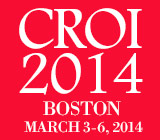 There has been a recent uptick in the proportion of men who have sex with men (MSM) undergoing HIV screening as well as a notable rise in the percentage of those MSM who are taking antiretrovirals (ARVs). However, there has been no recent change in the rate of those who are linked promptly into medical care following an HIV diagnosis. These findings were presented by Centers for Disease Control and Prevention (CDC) researchers at the Conference on Retroviruses and Opportunistic Infections (CROI) in Boston.
There has been a recent uptick in the proportion of men who have sex with men (MSM) undergoing HIV screening as well as a notable rise in the percentage of those MSM who are taking antiretrovirals (ARVs). However, there has been no recent change in the rate of those who are linked promptly into medical care following an HIV diagnosis. These findings were presented by Centers for Disease Control and Prevention (CDC) researchers at the Conference on Retroviruses and Opportunistic Infections (CROI) in Boston.
In one study, researchers examined data from the CDC’s National HIV Behavioral Surveillance (NHBS) database to measure differences between 2008 and 2011 in the proportion of MSM reporting an HIV test within the past year. There was a statistically significant rise (meaning the findings were unlikely to have been caused by chance) in testing rates among this population, from 63 percent in 2008 to 67 percent in 2011. There was a much greater jump among black MSM, from 63 percent to 71 percent.
In a second study, investigators examined NHBS data from the same time period to determine rates of linkage into heath care following an HIV diagnosis as well as use of ARVs among MSM. There was no statistically significant change in the proportion of those linked to care; about three quarters of MSM testing positive entered the health care system promptly afterward in both 2008 and 2011.
However, during that time frame, the rate of MSM living with HIV who were taking ARVs jumped from 68 percent to 77 percent. There was an increase in ARV use amongst most of the demographic subgroups.
Those MSM with higher education and income, as well as those who identified as gay (as opposed to heterosexual or bisexual) and those who were older than 30 when they were diagnosed with the virus were the most likely to be linked to care early and to be on HIV therapy. The use of ARVs was more prevalent among white MSM than among minorities.
Advertisement
Advertisement
Advertisement






Comments
Comments